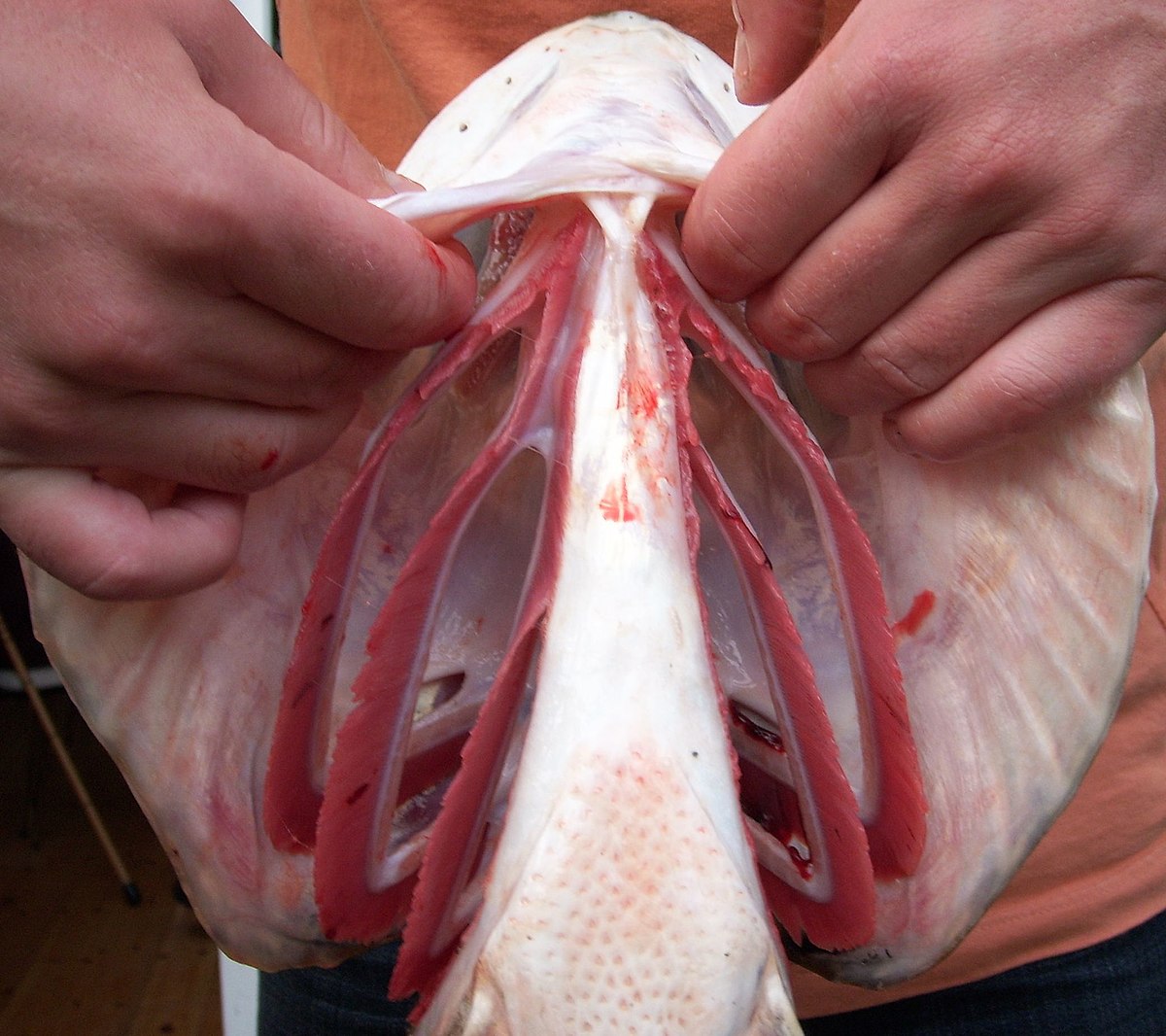Gill
- There are four pairs of filliform gills in rohu. The hyoid and fifth branchial arches are abranch i.e. without gill.
- There are mainly 3 parts in a typical gill arch, gill rackers and gill lamellae.
- Each gill arch consists of two rows of gill filaments present along the anterior as well as posterior margin of the interbranchial septum.
- Each primary lamella bears a large number of secondary lamellae on both its sides.
- The gill rackers are also occurring in two rows which is modified according to the feeding habits of fishes.
- The mucous cells present in the gill rackers help to remove the sediments. They protect the gill lamellae from hard particles.
- The gills of rohu are holobranchs or complete. It consists of a cartilaginous arch. A holobranch carries two hemibranchs.
- The inter-branchial septum is reduced and both the gill filaments hang out freely up to the branchial chambers.
- Afferent branchial arteries supply blood to the gill filament for oxygenation and efferent branchial arteries leave the gill and carry oxygenated blood.
